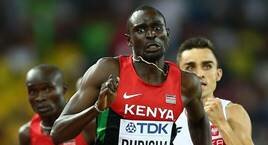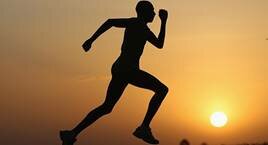In the dynamic world of sports, it's easy to marvel at the athleticism and precision of today's athletes. But have you ever wondered how athletic training has evolved over time, shaping the champions we admire? Join us on a journey through history as we explore the fascinating evolution of athletic training - a topic that intrigues not only Sports Enthusiasts and Athletes but also Coaches, Students, and History Buffs. If you are a student and sports are important in your life, you may also be interested in educational service providers. Check out the offers of the best website to buy college papers via https://essaysworld.net/buy-college-papers-online, because sports interests occupy a large part of your life, and in some cases it is simply necessary to delegate academic duties.
Early Beginnings of Athletic Training
The roots of athletic training date back to ancient civilizations like Greece, where physical fitness was highly prized. From the gymnasia of Athens to the military training of Sparta, the ancient Greeks laid the foundation for the importance of physical education. In those days, athletes relied on rudimentary techniques, honing their skills in the quest for glory.
Fast forward to the Renaissance era, and we witness a shift in perspective. Scholars and educators emphasized a more holistic approach to physical well-being, recognizing the interplay between body and mind. The likes of Johann Christoph Friedrich GutsMuths, a German educator, advocated for gymnastics as an essential part of education. This transition marked the birth of modern sports education.
The Influence of the Olympic Games
The revival of the modern Olympic Games in 1896 was a pivotal moment in the evolution of athletic training. The Games, aimed at celebrating human potential, pushed athletes to elevate their performance. The introduction of national teams and organized competition led to the development of structured training programs, with coaches and trainers playing crucial roles.
One name that stands out is that of Charles H. McCloy, who worked with American athletes in the early 20th century. He emphasized the use of scientific principles in training, focusing on individualized routines to enhance performance. The science of athletic training was born.
Innovations in Athletic Training
As the 20th century progressed, sports medicine became a game-changer. The field of sports science, with pioneers like Dr. Gideon Ariel, incorporated biomechanics and physiology into training. Athletes began to benefit from the tailored, data-driven approaches that are commonplace today.
Technological advancements, too, left their mark. From specialized footwear to cutting-edge training equipment, athletes had access to tools that pushed the boundaries of their performance. The integration of video analysis, nutrition science, and wearable technology revolutionized training methods.
The Role of Coaches and Trainers
Coaches and trainers have always been central to the success of athletes. In the past, coaching was more art than science, with intuition and experience guiding decisions. However, over time, the role of coaches and trainers evolved. They became educators, guiding athletes through not just physical but mental challenges as well.
One legendary coach who influenced the world of athletics is Vince Lombardi, known for his transformative leadership in American football. Lombardi's emphasis on discipline and dedication demonstrated the power of effective coaching. Today, coaches and trainers employ a blend of experience, science, and technology to optimize training regimes.
The Intersection of Sports Education and Academia
The intersection of sports education and academia further elevated the field. Educational institutions began offering degrees in sports science, sports medicine, and physical education, providing aspiring coaches and students with a structured path to understanding the intricacies of athletic training. Universities became hubs for research and innovation in the field of sports.
The Contemporary Landscape
In the 21st century, the landscape of athletic training continues to evolve. The use of AI and big data analytics to fine-tune training programs is becoming increasingly prevalent. Training facilities have become high-tech laboratories, and recovery methods have become just as important as the workouts themselves.
Coaches, athletes, and researchers constantly seek ways to push the boundaries of human potential. The world of sports education is more dynamic than ever, with the past serving as a foundation for the future. As Sports Enthusiasts, Athletes, Coaches, Students, and History Buffs, we have the privilege of witnessing this evolution firsthand.
Conclusion
In conclusion, the history of sports education and the evolution of athletic training are not just tales of the past. They are narratives that continue to shape our present and future. By understanding how we arrived at this point, we can appreciate the incredible dedication, innovation, and passion that fuel the world of sports. So, whether you're an athlete striving for greatness, a coach guiding the way, a student embarking on a sports science journey, or a history buff fascinated by the past, the story of athletic training is an enduring narrative worth celebrating. It's a testament to human determination and progress.

